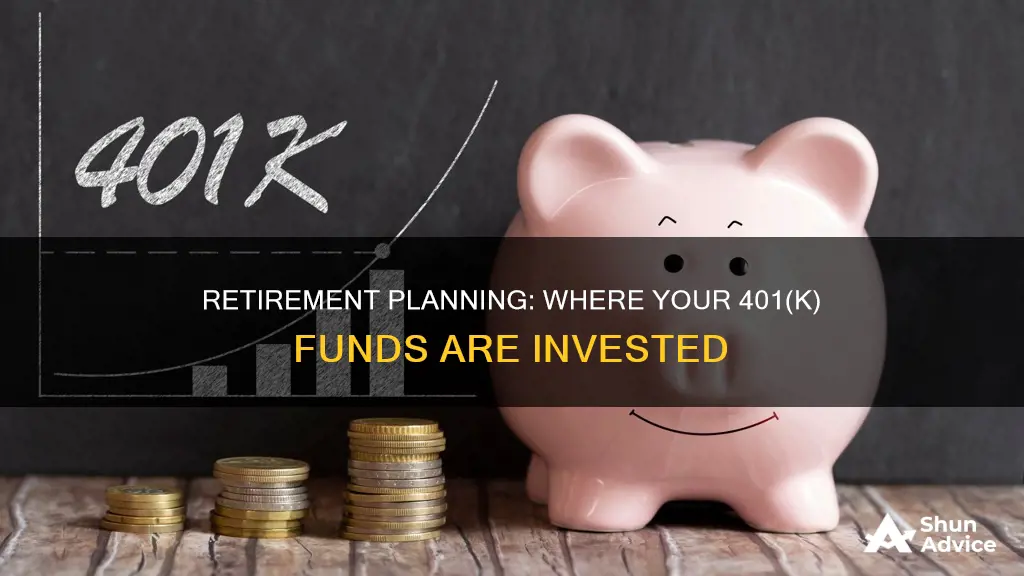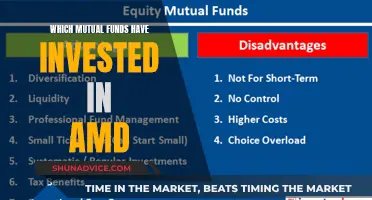
A 401(k) is a tax-advantaged retirement savings plan. It is a company-sponsored retirement account in which employees can contribute a percentage of their income. There are two types of 401(k)s: traditional and Roth. With a traditional 401(k), contributions are made pre-tax, reducing taxable income, but withdrawals are taxed. With a Roth 401(k), contributions are made post-tax, and withdrawals are tax-free.
A 401(k) plan typically offers a range of investment options, including mutual funds, exchange-traded funds (ETFs), and target-date funds. Mutual funds are the most common investment option and range from conservative to aggressive. When picking investments, it is important to consider your financial goals, diversify your portfolio, assess your risk tolerance, and evaluate your time horizon. It is also crucial to pay attention to fees and expense ratios to minimize costs.
By understanding the features of a 401(k) and carefully selecting investments that align with your goals and risk tolerance, individuals can effectively utilize this retirement savings vehicle to build their financial future.
| Characteristics | Values |
|---|---|
| Investment options | Stock mutual funds, bond mutual funds, target-date funds, stable value funds, individual stocks, bonds, ETFs or other mutual funds |
| Investment selection criteria | Long-term returns, expense ratio |
| Investment selection approach | DIY, target-date fund |
| Investment selection considerations | Financial goals, diversification, risk tolerance, time horizon |
| Investment management | Monitor performance, rebalance when necessary |
| Risk tolerance assessment | Investment Risk Tolerance Assessment by Dr. Ruth Lytton and Dr. John Grable |
| Asset allocation | 110 minus age = % of portfolio in equities, rest in bonds |
| Asset allocation considerations | Age, investing horizon |
| Asset allocation adjustments | Annually, when investing horizon or risk tolerance changes |
| Fund fees | Expense ratio, management fees, sales charges |
| Fund fees considerations | Compare to index funds, passive funds |
| Fund performance | Long-term (5-10 years) over short-term (1-2 years) |
What You'll Learn

Risk tolerance
If you have a low risk tolerance, you may prefer to invest in more conservative options, such as bond funds, money market funds, index funds, stable value funds, or target-date funds. These options generally have lower returns but also carry less risk. On the other hand, if you have a high risk tolerance, you may be willing to invest in more aggressive options, such as stocks or mutual funds, which can offer the potential for higher returns but also come with greater risk.
Your risk tolerance may also change over time. As you get closer to retirement, you may want to consider investing in less risky options to protect your savings. Additionally, as you get older, it is generally recommended that you gradually reduce your holdings in risky funds and move towards safer investments.
It's important to carefully consider your risk tolerance and choose investments that align with your comfort level. Diversifying your portfolio across different types of investments can also help to mitigate risk. Remember, investing always carries some level of risk, but by understanding your risk tolerance, you can make more informed decisions about how to invest your 401(k) funds.
Best Vanguard Funds for Your Roth IRA
You may want to see also

Long-term returns
When it comes to investing your 401(k) funds, it's important to consider the long-term returns of the available investment options. Here are some key points to keep in mind:
- Long-term returns refer to the performance of an investment fund over extended periods, typically five and ten-year periods, as well as since its inception. When evaluating long-term returns, look for funds that have consistently performed well over these longer time frames rather than just focusing on short-term gains.
- Compare the returns of different funds in your 401(k) plan. This will help you identify the ones with the best long-term performance. Keep in mind that past performance doesn't guarantee future results, but it can be a useful indicator.
- Consider the fees associated with each investment option. The expense ratio, which represents the cost of holding the fund for a year as a percentage of the invested amount, can impact your overall returns. Opt for funds with lower expense ratios to maximize your returns.
- Diversification is crucial. Spread your investments across different asset classes, such as stocks, bonds, and other securities. This helps minimize risk and potentially enhances long-term returns.
- Assess your risk tolerance and time horizon. If you're in your 20s or 30s, consider allocating more towards stocks, as you have a longer time horizon and can withstand market volatility. As you approach retirement, gradually reduce your stock allocation and shift towards more conservative investments.
- Consider using target-date funds. These funds automatically adjust their asset allocation based on your chosen retirement date, becoming more conservative over time. While they may have higher fees, they offer a "set-it-and-forget-it" solution for those who don't want to actively manage their investments.
- Monitor and rebalance your portfolio periodically. Regularly review the performance of your investments and make adjustments as needed to maintain your desired asset allocation. This ensures your portfolio stays aligned with your financial goals and risk tolerance.
Large-Cap Funds: When to Invest for Maximum Returns
You may want to see also

Expense ratios
When it comes to investing in a 401(k), expense ratios are an important aspect to consider. These fees, which are charged as a percentage of the amount invested, can significantly impact your overall returns. Here's what you need to know about 401(k) expense ratios:
Impact on Investment Decisions
Reasonable Expense Ratios for 401(k)s
According to data, 401(k) plan participants paid an average expense ratio of 0.36% in 2021. However, expense ratios can vary among providers, and it's important to compare options to find the most competitive rates. Vanguard, for instance, is known for offering some of the lowest expense ratios in the industry.
Choosing Funds with Reasonable Expense Ratios
Federal law imposes a fiduciary duty on retirement plan providers to offer reasonably priced investment options, including expense ratios. As an investor, you should review the participant fee disclosure notice on your 401(k) statement to understand the fees associated with your plan. Additionally, consider comparing your plan with others of similar size to ensure you're not paying excessive fees.
Lowering Your 401(k) Fees
If you find that your 401(k) fees are higher than average, there are a few strategies you can employ:
- Choose lower-cost investment options: Opt for low-fee funds like index funds, institutional funds, and target-date funds. These funds typically have lower expense ratios and can help minimise fees.
- Review investment advice fees: If your plan includes fees for independent investment advice, consider whether this is necessary. In many cases, you may be able to do your own research or consult a financial planner for a one-time fee instead.
- Consider alternative investment options: If your plan's fees remain high despite your efforts, you may want to explore investing in an IRA or other investment vehicles outside of your 401(k). Just make sure you're still contributing enough to your 401(k) to take full advantage of any employer match.
Selling Investment Funds: Knowing When to Let Go
You may want to see also

Target-date funds
TDFs are a popular option for 401(k) plans, especially for those who don't have the time or inclination to review their fund's holdings annually and revise their investment strategy accordingly. They are also available for people investing in individual retirement accounts (IRAs).
TDFs are managed by professionals and provide a diversified mix of stocks, bonds, and other investments that change over time. They are designed to take the guesswork out of saving for retirement. The funds make it easy to navigate towards retirement by managing investments over time. A portfolio manager will make trades based on a "glidepath" to adjust the underlying mix of investments that make up the fund.
The glidepath is like an investment roadmap that helps determine the risk exposure over the course of your journey towards retirement by adjusting diversification levels. Investors can take more risk when they are younger since they have a long-term horizon to weather the typical ups and downs of the stock market. As investors get closer to retirement, the fund moves towards lower-risk options.
TDFs can be actively managed, passively managed (investing in index funds), or a blend of the two strategies. They are typically mutual funds, but there are also target-date ETFs and target-date mutual funds that charge low fees.
One of the main benefits of TDFs is access to professional management. The managers conduct research to inform the creation of the "glidepath" strategy that the fund will use. These glidepaths outline how the fund will plan to navigate risk for investors as they approach retirement, helping to ensure that savers are invested in appropriate assets.
TDFs can help manage inflation risk by investing more heavily in stocks earlier in an investor's career, with the aim of growing savings past the point of inflation. Some TDFs also invest in "real assets", such as Treasury Inflation-Protected Securities (TIPS) and real estate, which have traditionally helped hedge against inflation.
TDFs are a good choice for investors with a known savings goal or target retirement date who don't have the time or skill to construct a diversified portfolio. They provide ongoing professional investment management, including research and asset allocation, regular rebalancing, and risk management as the goal date nears.
However, TDFs may not be suitable for everyone. They can be relatively expensive in terms of fees, and they may not allow much room for changing investor goals and needs. It's important to evaluate your goals and the glide path of any prospective funds before investing.
Business Fund Investments: Expansion Strategies and Opportunities
You may want to see also

Active vs passive funds
Active and passive funds are two different investment strategies that investors can use to manage their 401(k) plans. Here are some key differences between the two:
Active Funds
Active funds are managed by portfolio managers who actively buy and sell investments to try to outperform a specific index, such as the S&P 500 or the Russell 2000. Active funds have higher expenses due to the need for ongoing research, analysis, and trading activities. The advantage of active funds is that they offer flexibility, allowing managers to adjust portfolios based on market conditions and economic trends. However, active funds also carry performance risks, as even the best managers can make poor investment decisions that lead to underperformance.
Passive Funds
Passive funds, on the other hand, aim to replicate the performance of a specific index by holding the same securities as the index. These funds are generally automated and have lower expenses than active funds. The benefit of passive funds is that they are less volatile and less risky because they do not involve unsystematic risks like stock selection. However, passive funds have limited potential for outperformance and are less flexible in adjusting to market fluctuations.
Both active and passive funds have their advantages and disadvantages, and the choice between the two depends on the investor's goals, risk tolerance, and preferences. Active funds may be suitable for those seeking higher returns and are willing to take on more risk, while passive funds are a better fit for those preferring a low-cost approach with broad market exposure. Many investors choose to blend the two strategies to take advantage of the strengths of both and further diversify their portfolios.
Gold Fund Investment: Timing is Everything
You may want to see also
Frequently asked questions
There are two major types of 401(k) plans: traditional and Roth. With a traditional 401(k), contributions are made pre-tax, meaning they reduce taxable income, but withdrawals in retirement are taxed. With a Roth 401(k), contributions are made with after-tax income, so there is no tax deduction in the contribution year, but withdrawals are tax-free.
A 401(k) offers tax benefits, such as lowering current taxable income and deferring taxes on investment gains. Additionally, employers often match employee contributions, providing an opportunity for tax-deferred growth.
When selecting investments, consider factors such as long-term returns, expense ratios, and diversification. You can invest in mutual funds or exchange-traded funds (ETFs) that offer a range of conservative to aggressive options. It is important to assess your financial goals, risk tolerance, and time horizon to make informed decisions.
Some potential risks include being too conservative, paying too much in fees, and experiencing investment losses. It is crucial to understand the risks and rewards of your investments and maintain a balanced portfolio that aligns with your risk tolerance.







